O Android TV vem com um teclado de software na tela chamado Gboard. O teclado oferece suporte a uma ampla variedade de recursos, como conversão de voz em texto (STT), que permite os usuários falam e a fala é automaticamente traduzida em texto para entrada. Esse recurso funciona com o Gboard, então você não precisa solicitar o áudio permissão ou fazer algum tratamento especial no app.
Métodos de entrada
É possível especificar o tipo de método de entrada. para Android TV da mesma forma que para dispositivos móveis, com a diferença O Gboard para Android TV é compatível com um conjunto mais limitado de tipos de entrada, mostrado em as figuras a seguir:
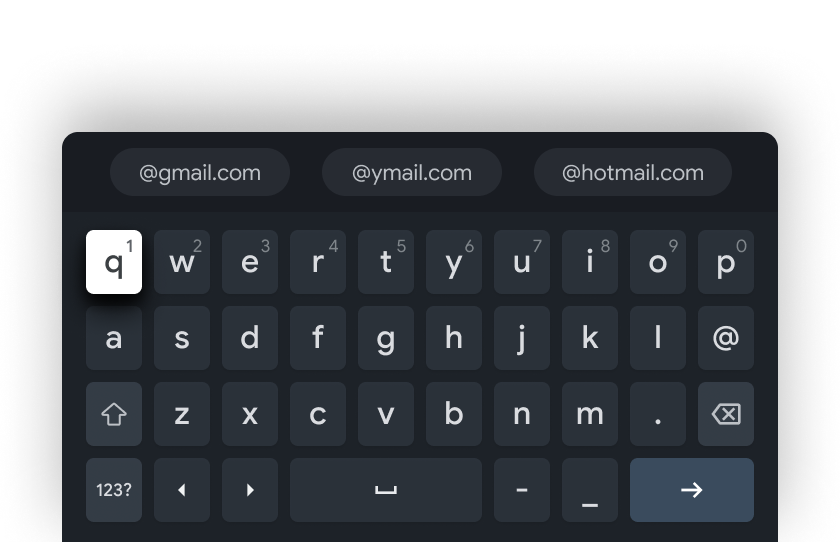
|
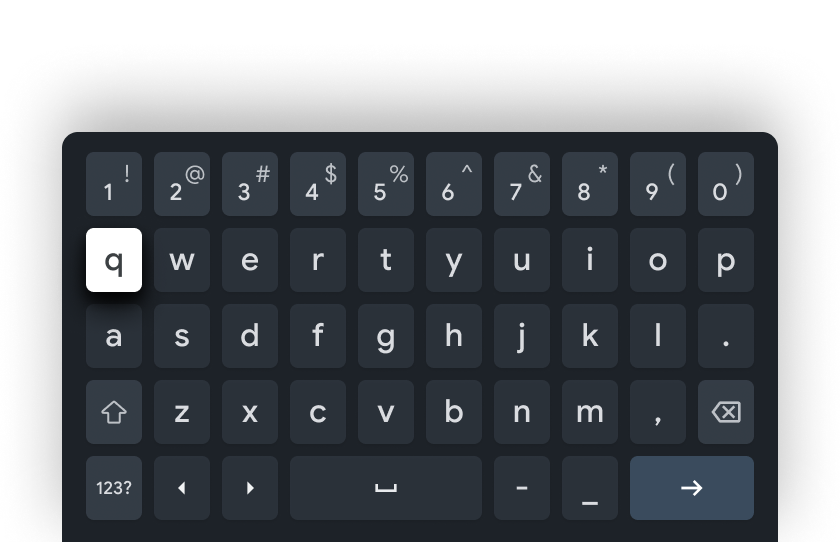
|
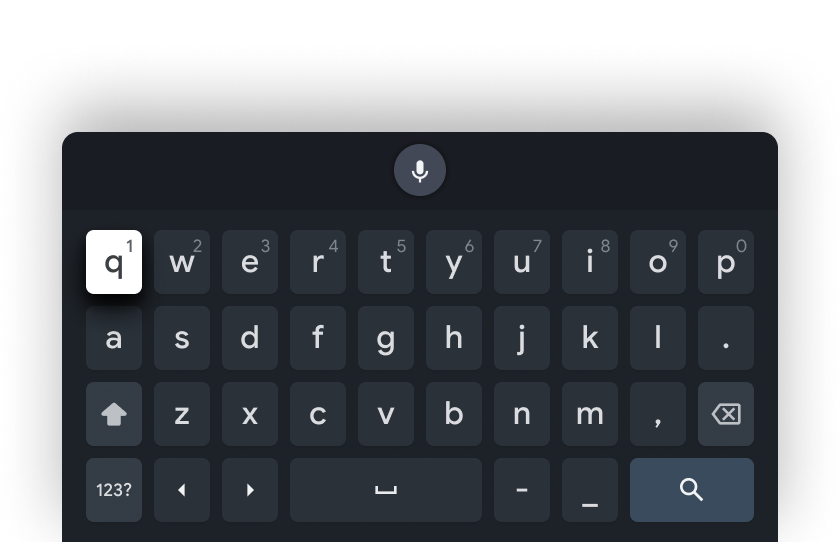
|
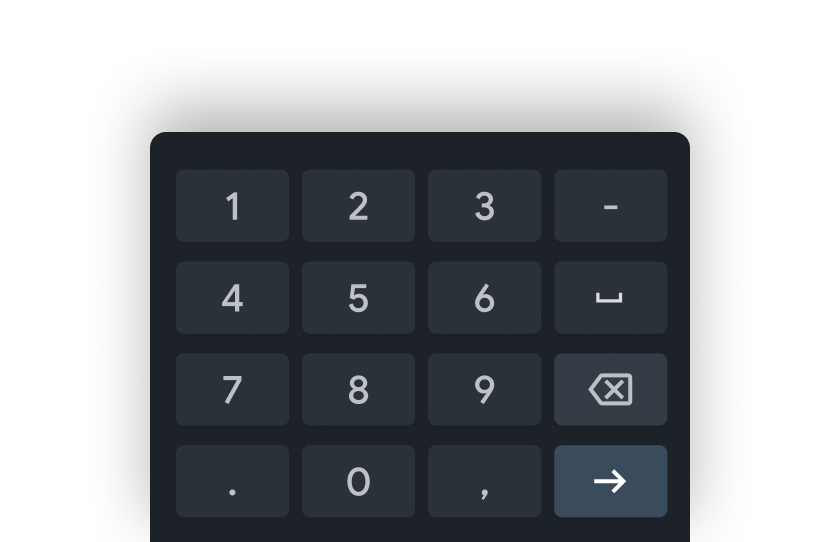
|
Especifique um ou mais tipos de entrada com base no uso caso. O Gboard determina automaticamente o melhor layout com base na entrada os tipos especificados e os layouts compatíveis.
Posição
Uma grande diferença do Gboard para Android TV é a capacidade de especificar onde o teclado deve ser colocado. Antes, o teclado cobria a parte de baixo parte da tela de ponta a ponta, mas uma atualização no Gboard permite flutuar. Você pode especificar onde o teclado deve ficar: à esquerda, à direita ou no centro. A posição padrão é o centro.
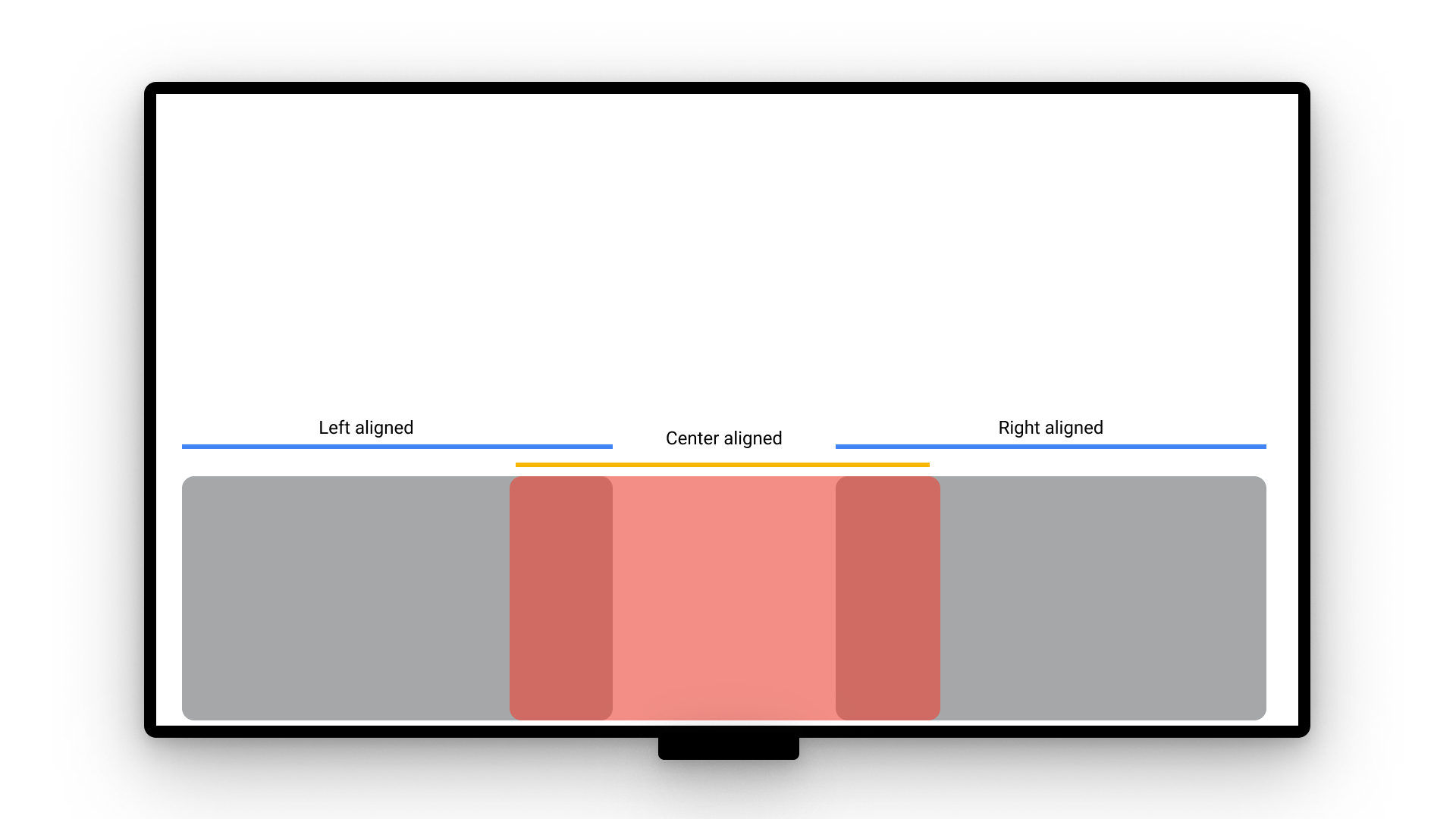
Para controlar o alinhamento, defina o valor em privateImeOptions para
horizontalAlignment. As opções para horizontalAlignment são o padrão
center, left e right.
Isso é mostrado neste exemplo:
<EditText android:layout_width="match_parent" android:layout_height="wrap_content" android:imeOptions="actionNext" android:privateImeOptions="horizontalAlignment=right">
Neste exemplo, o teclado é posicionado no canto inferior direito, o que funciona bem. quando os campos de entrada estão alinhados à direita:
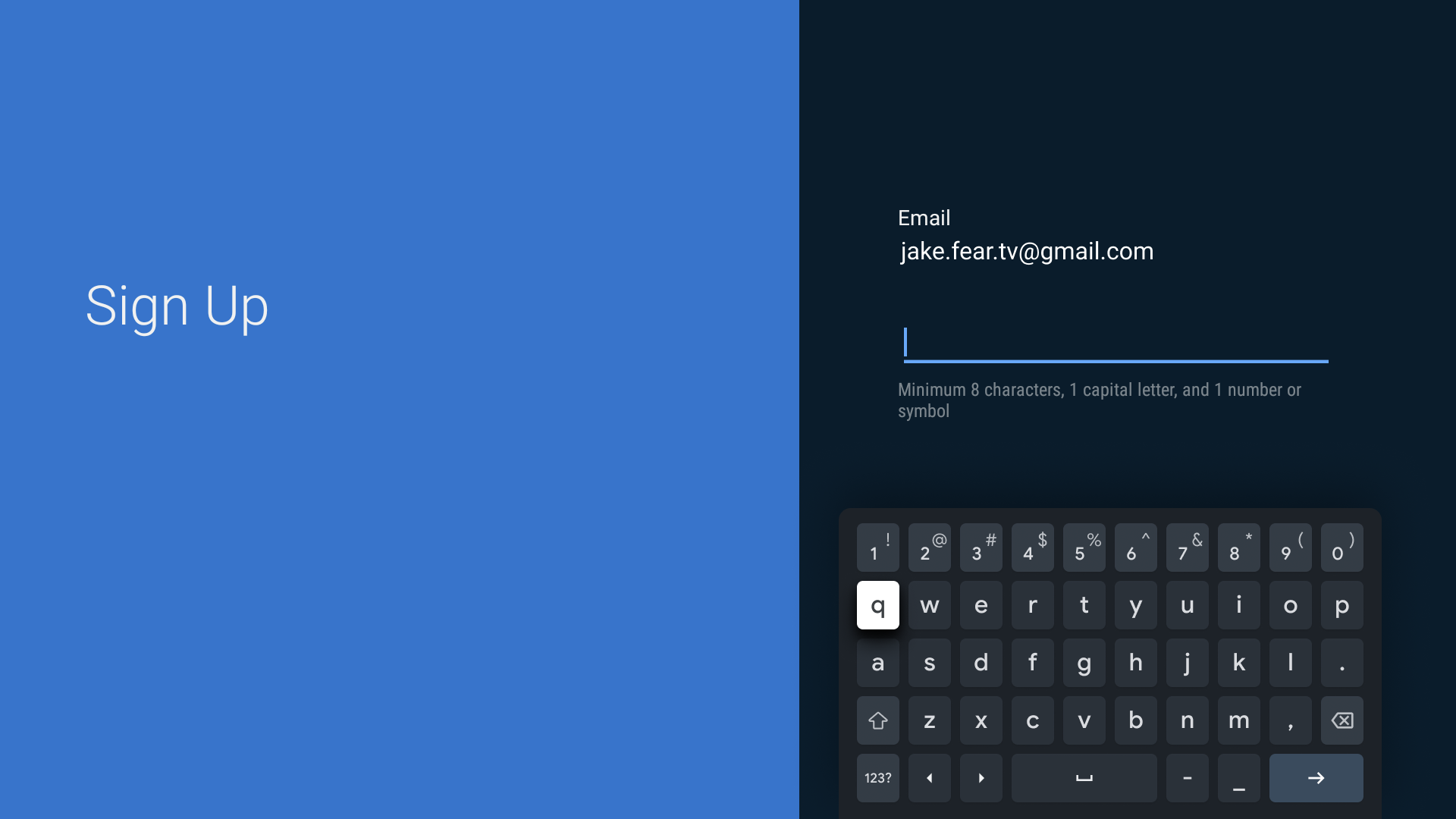
Idiomas aceitos
O Gboard para Android TV é compatível com vários idiomas diferentes. A lista de idiomas inclui o seguinte:
- Inglês (EUA)
- Inglês (Austrália)
- Inglês (Canadá)
- Inglês (Reino Unido)
- Africâner
- Albanês
- Árabe
- Bengalês
- Búlgaro
- Birmanês
- Chinês: Hong Kong
- Chinês - Simplificado
- Chinês (tradicional)
- Croata
- Tcheco
- Dinamarquês
- Holandês: Bélgica
- Holandês: Nederlands
- Estoniano
- Farsi
- Filipino
- Finlandês
- Francês
- Francês: Bélgica
- Francês: Canadá
- Francês: Suíça
- Alemão
- Alemão: Áustria
- Alemão — Bélgica
- Alemão: Suíça
- Grego
- Hebraico
- Hindi
- Híndi: transliteração
- Húngaro
- Indonésio
- Irlandês
- Italiano
- Italiano: Suíça
- Japonês: Japão
- Coreano
- Lituano
- Macedônio
- Malaio
- Norueguês: bookmål
- Ozbeque
- Polonês
- Português
- Punjabi
- Romeno
- Russo
- Sérvio
- Eslovaco
- Esloveno
- Espanhol (México)
- Espanhol (Espanha)
- Sueco
- Tailandês
- Turco
- Ucraniano
- Urdu
- Vietnamita

